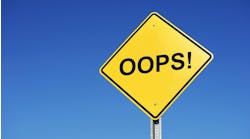Obstructive sleep apnea (OSA) is characterized by a cessation of breathing during sleep, associated with the relaxation of the oropharyngeal muscles and the tongue collapsing on the airway causing the individual to temporarily stop breathing. This cessation of breathing is manifested by a variety of behaviors such as snoring, choking, gasping, and waking from sleep multiple times during the night, all of which prevent those with OSA from getting sufficient deep, restful, and restorative sleep.
OSA is much more than an inconvenience for the afflicted person or their bedmate. OSA is linked to a plethora of systemic health risks such as an increased risk for type 2 diabetes, cardiovascular disease, obesity, and cancer.1-5
Daytime sleepiness, which is directly associated with OSA, has also been linked with an increasing number of traffic and mass transit accidents and fatalities.6-8
There’s also been recent research indicating there might be an increase in the severity of COVID-19 for those who have OSA. “Among patients with COVID, obstructive sleep apnea was associated with increased risk of hospitalization and approximately double the risk of developing respiratory failure.”9
Teledentistry enhances sleep dentistry workflow
OSA is diagnosed by physicians through a sleep study ideal for medical-dental integration and collaboration. Dental sleep medicine and teledentistry may seamlessly complement each other for the benefit of patients and allied health-care practitioners alike. It is important to note that teledentistry is simply an enhancement to in-office dental sleep medicine treatment and not a replacement.
Dental sleep therapy: It's a math problem
5 ways teledentistry can improve the oral health system
A professional-grade teledentistry platform expands the reach of dental sleep medicine providers, makes it easier to consult with medical providers who evaluate and diagnose sleep-related breathing disorders, and improves convenience for patients. So where does teledentistry fit within the workflow of a dental sleep medicine practice? Here are three applications to consider.
Virtual screenings
It’s easy to conduct the initial patient screening for OSA via teledentistry. You can review the patient’s medical history and sleep surveys virtually. Surveys such as the Epworth Sleepiness Scale and the STOP-BANG questionnaire are commonly used. If the patient’s survey answers suggest that the patient may be at risk for OSA, you can refer the patient to a sleep medicine physician for further evaluation.
Medical-dental collaboration
If you are offering dental sleep medicine services in your practice, establish close working relationships with local sleep medicine physicians who can evaluate patients and diagnose sleep-related breathing disorders.
Utilizing teledentistry for virtual introductions, comanagement huddles, and collaborative treatment planning can strengthen those working relationships with the physicians in your community, as well as respective care teams.
Depending on the physician’s preference, sleep studies may be conducted at the patient’s home or in a dedicated sleep lab. Traditionally, a sleep study in the lab is considered more accurate, but in the COVID era, home sleep studies are getting to be more popular among clinicians and patients alike.10
Virtual post-sleep study consultation
Teledentistry may be used to conduct virtual consultations with your referring sleep physician to discuss your mutual patient’s medical history, survey scores, airway radiographs, etc. You can also use this virtual opportunity to discuss continuous positive airway pressure (CPAP) versus oral appliance treatment options. CPAP is still considered the gold standard, but more and more physicians are prescribing mandibular advancement devices for patients who cannot tolerate CPAPs for mild to moderate OSA.11
After this virtual visit, you can have the patient schedule an in-office visit to perform a comprehensive oral evaluation and head and neck exam, take appropriate radiographs, take impressions, and bite registration to fabricate the oral appliance.
Mandibular advancement devices may cause some side effects, such as occlusal changes, which is why it is essential to establish a continuous patient monitoring protocol.
Conclusion
Dental sleep medicine and teledentistry are experiencing a parallel growth trajectory. Teledentistry is not a substitute for in-office visits, but it can complement a growing sleep medicine practice.
Editor's note: This article appeared in the November 2022 print edition of Dental Economics magazine. Dentists in North America are eligible for a complimentary print subscription. Sign up here.
References
1. Campos-Rodriguez F, Martinez-Garcia MA, Martinez M, et al. Association between obstructive sleep apnea and cancer incidence in a large multicenter Spanish cohort. Am J Respir Crit Care Med. 2013;187(1):99-105. doi:10.1164/rccm.201209-1671OC
2. Dopp JM, Reichmuth KJ, Morgan BJ. Obstructive sleep apnea and hypertension: mechanisms, evaluation, and management. Curr Hypertens Rep. 2007;9(6):529-534. doi:10.1007/s11906-007-0095-2. PMID: 18367017.
3. Khattak HK, Hayat F, Pamboukian SV, Hahn HS, Schwartz BP, Stein PK. Obstructive sleep apnea in heart failure: review of prevalence, treatment with continuous positive airway pressure, and prognosis. Tex Heart Inst J. 2018;45(3):151-161. doi:10.14503/THIJ-15-5678
4. Little JW, Falace DA, Miller CS, Rhodus NL. Dental Management of the Medically Compromised Patient. Mosby; 2008.
5. Nagai M, Hoshide S, Kario K. Sleep duration as a risk factor for cardiovascular disease—a review of the recent literature. Curr Cardiol Rev. 2010;6(1):54-61. doi:10.2174/157340310790231635
6. Kalsi J, Tervo T, Bachour A, Partinen M. Sleep versus non-sleep-related fatal road accidents.Sleep Med. 2018;51:148-152. doi:10.1016/j.sleep.2018.04.017
7. Garbarino S, Durando P, Guglielmi O, et al. Sleep apnea, sleep debt and daytime sleepiness are independently associated with road accidents. A cross-sectional study on truck drivers. PloS One. 2016;11(11):e0166262. doi:10.1371/journal.pone.0166262
8. Joseph E. Sleep apnea led to tired engineers and 2 train crashes, NTSB says. CNN. Updated February 6, 2018. https://www.cnn.com/2018/02/06/us/sleep-apnea-railroad-accidents/index.html
9. Maas MB, Kim M, Malkani RG, Abbott SM, Zee PC. Obstructive sleep apnea and risk of COVID-19 infection, hospitalization and respiratory failure. Sleep Breath. 2021;25(2):1155-1157. doi:10.1007/s11325-020-02203-0
10. Peters B. What is a sleep study (polysomnogram)? Verywell Health. Updated September 17, 2022. www.verywellhealth.com/what-to-expect-in-a-sleep-study-3015121
11. Sangalli L, Yanez-Regonesi F, Fernandez-Vial D, Martinez-Porras A, Moreno-Hay I. Comparison of three mandibular advancement device designs in the management of obstructive sleep apnea: a retrospective study. J Dent Sleep Med. 2021;9(3). doi:10.15331/jdsm.7250







